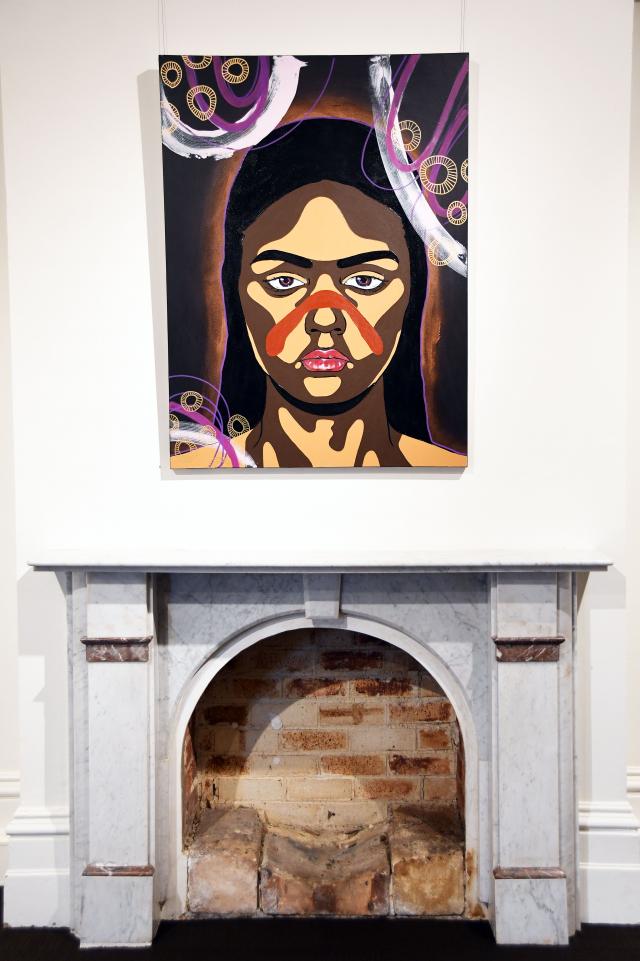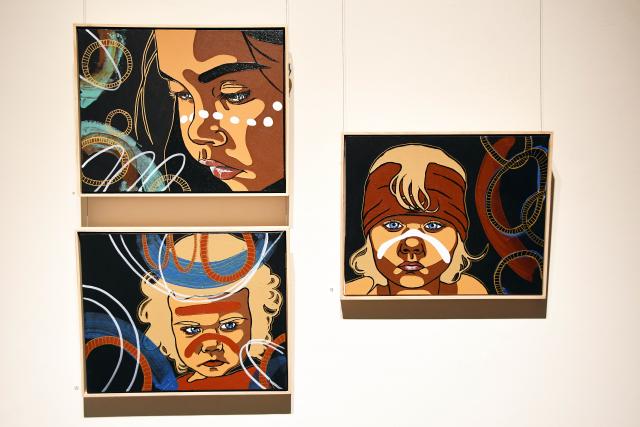By Mikayla van Loon
Yarra Ranges Regional Museum has launched its contributing exhibitions for the Burrinja Climate Change Biennale, featuring talented local artists.
The impactful works of Nuenonne woman Amanda Wright have been featured in the upstairs Chambers gallery.
Sharing her connection to Country and her ancestral heritage of the Nuenonne people from Bruny Island, Amanda has always had a deep bond with water.
“Water has been very important because of my grandmother, my great grandmother and so on, they’ve always lived near water,” she said.
“My partner’s a Bundjalung man, so he grew up at the river and my children’s names are River and Odern, which means deep water in Aboriginal too. We’re just always with water.”
Drawing on her female ancestry to tell the tales of “resilience, strength and survival of First Nations people”, Amanda’s use of colour is bold and emotionally effective in telling a story.
“When I paint, I think of my mum’s side of the family, my grandmother’s, all the time because my grandmother was so important to me, they all grew up at the beach.
“My mum was a big collector of shells, so we’re a big collector of shells. I am. When I’m thinking of them, I’m thinking of where they came from.”
The exhibition space at the Museum presents Amanda’s grandmother as the centre figure, something she said “I had the light come to me, I wanted her to be in the middle, it’s just how I pictured it.”
Using six layers of paint, Amanda’s portrait works create depth, weaving together colour and symbols of her First Nations culture.
“It’s about six layers each of colour on their faces. I go over it so I get that bumpy look around each shape,” she said.
“It takes six to eight hours for a little [painting] but I paint every day. Sometimes I’ll paint a picture in a day.”
Exploring both portraiture and abstract art, Amanda said she has always had an interest in abstract works and delving into the techniques and use of different mediums to create layers of texture.
“When I finished my RMIT Fine Arts painting, I did a lot of abstract work when I was at uni. I paint portraits but I always paint abstracts as well along with them.”
Museum exhibition curator Madeline Reece said it was a pleasure to have Amanda’s talents on show to really tell the story of the Nuenonne tribe’s connection to water and establish conversations around climate change.
“Her painting practice really has this screen quality to it and they’re so beautiful and striking. Again, not in a tokenistic way of capturing strong, First Nations women,” she said.
“They’re very contemporary but they’re just embedded with a lot of cultural meaning and she’s exceptional.”
This experience of First Nations art, Madeline said, is an extension of the work the Yarra Ranges Regional Museum has done in the past to give First Nations’ artists and curators a place to have a voice.
“From a museum perspective, we are trying to centre First Nations voices and experiences in our programming,” she said.
“There’s a real pivotal change, hopefully, happening and Amanda, being a local First Nations artist and exhibiting in this colonial space is really important. As Chris Joy from Hearth Galleries mentioned to me, the works feel like they’re correcting the gaze a bit as well.”
To learn and explore these First Nations’ experiences, Yarra Ranges Regional Museum can be found at 35-37 Castella Street, Lilydale Wednesday to Sunday 12pm to 4pm.









